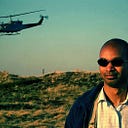Dragons Den say this is one of the best pitches ever heard.
The photo says it. The entrepreneurs on Dragons Den have their attention captured. “‘This is one of the best pitches that I’ve ever heard on Dragons’ Den”, say one of the dragons. And it would seem others didn’t disagree.
We all have ideas; some people are better at generating them, others at presenting. Either can be learned. There are many ways to pitch and this one aligns with the time available, the attention of the audience ( who hear many pitches) and the bare resources you need.
Sam Jones from Gener8 is in the Den. What he does with his time and space is a masterclass. Here’s why.
I wager Sam, has rehearsed and rehearsed this to the point it seems natural and unhurried. Its flow and pregnant pauses provide an engaging drama.
Here’s what he did:
- He centres himself in the space and smiles. The smile carries through his pitch. He says his name and where he’s from. That’s all that’s needed. If you want a back story, save it for when it’s needed. ( see evidence (5))
- Jason reveals something in the zeitgeist, a worldly pattern; something that’s happening from a change of previously accepted habits/ behaviours etc, or is in the background as a matter of concern. Don’t start with what you have. Audiences want a story, and even more to like you. That smile, gaze and controlled hand movements are meant for the Dragons. Some cultures disapprove of hand movement ( know your audience). Sam’s using key trigger words “open secret” “exploit” which pulls us into his narrative (think newspaper headlines). If you’ve not used co-scheduled before, take a look. It shows key words that trigger attention.
- The loss aversion theory is something Daniel Kahneman talks about in his book Thinking Fast and Slow. What are you losing? What could you gain instead? What are the choices in front of you? In this case, it’s data and money — which are grind teeth issues; two current emotional touch points. See Jaron Lanier about how you could get paid for your data
- Two school of thoughts here. If your brand name has a relational association with your solution, introduce it. Does Engage8 conjure up a tool that will lead to engagement. I’m sure Jason product tested this first.
If however the brand name is a bit skewed, you might want to introduce an analogy, or metaphor for that relational association, a “what if…?” I read Phil Knight’s Nike in one sitting when it came out. Knight had his ups and downs with Nike. Some close to him didn’t like the name. But an association with athletes, giving away pairs of running shoes and photographing the wins led to a relational association. Today Nike has become a by-word for excellence. - Introduce your product. Show its added features and provide evidence to support why you and your product.
Jason finishes. Still smiling. By now he’s clocked the feedback, body language and nods from the Dragons. What he’s asking for doesn’t sound unreasonable and he quotes figures for growth, which sound impressive. He’s likely rehearsed the questions he’ll be asked. In their standard form, they tend to be:
- Who’s your competitor?
- Why won’t other people jump on this?
- Why you?
He answers them all confidently and then just because he’s got their interest pulls of a master stroke in the end. Well worth a watch.
p.s. There’s a post called The Greatest Sales Deck I’ve Ever Seen. Do read. They do a more nuanced breakdown than I do
Dr David Dunkley Gyimah runs the LAB/ Emerging Journalism with JT. A former dotcomer and broadcast journalist, he’s behind the cinema journalism movement and is passionate about creativity, diversity and inclusion and the art of storytelling. More on him here
What s cinema journalism?
Younger audiences would rather watch a movie about a real event, rather than news about it? Cinema amongst many range age groups remains popular. In lock down we might not have been able to go to the movies, but you may have watched My Octopus Teacher, Fruitvale Station and Oscar winner Daniel Kaluuya in Judas and the Black Messiah. Netflix and streaming platforms are also a big treat to journalism.
There’s something about the production of cinema as truth telling, and I’m not referring to the enormous budgets, but the way it’s made. A way which journalism dabbled with and then let go. What if we could learn to create films of journalism, as if they were cinema? That’s not a hypothesis.
Because some of the best journalists around the world are and they’re winning awards for what they’re doing and audiences. I can show you what they’re doing. In part, it started when a the judge heading at the International Videojournalism Awards in Berlin called my news film I entered as an example of artistic videojournalism and cinema journalism.
